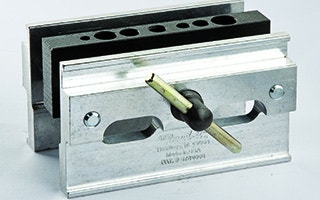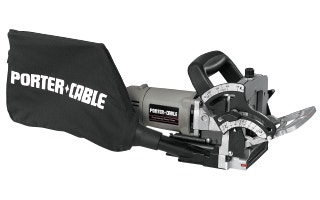Doweling vs. Biscuit Joints
Which is better, a quick and easy biscuit joint, or a good old fashioned doweled joint? Most woodworkers will tell you that it depends on the situation, and on what you are trying to achieve. Still, the two joinery methods are frequently held up to direct comparison. And when they are, a variety of opinions emerge.
"The tests I've seen published suggest that biscuits are the stronger of the two joints and are absolutely the easiest to fashion. Since the biscuits do have some slop in the slots they do not have to be as precisely located as dowel holes. Biscuits don't really add much strength. They are more for alignment, where the dowels will add a good deal of strength. In my use of biscuits they are designed to keep joints from pulling apart. The clearances the cutter makes to insert the biscuit allows for enough movement that alignment is not guaranteed.
Biscuits make an okay spline sometimes, but dowels are by FAR stronger in most cases. The forum seems to be of the opinion that biscuit is good for alignment only and contributes very little strength to the joint. On page 70 of Jim Tolpin's book, "Building Traditional Kitchen Cabinets" he writes, (Joining wood with compressed hardwood wafers let into slots is a viable alternative to mortis-and -tenon joinery. When done correctly, a biscuit joint is at least as strong as a similar size mortise and tenon joint, and decidedly stronger than a dowel joint."

What We Hear Most & Agree With Is This ...
Biscuits joints serve best as a quick and easy way to keep glue-up parts in alignment, and that they add appreciable pull-apart to strength joints that would be otherwise too weak to stand on their own – like butt joints and miter joints. Doweled joints, on the other hand, are stronger – especially when it comes to shear strength – but usually take longer to make.
This popular conclusion also echoes the findings of the "Wood Joint Torture Test", published in the November, 2006 issue of Wood magazine, where dowels and biscuits were actually tested against one another under stress in a variety of joints. Accepting that the two types of joint have these strengths and weaknesses, the next step is to determine what you need from a wood joint: How much shear strength do you need from the mitered joints of a picture frame, for example? Not much.
You just need the parts to line up and not pull apart. And when you're edge-gluing lumber, you just don’t need added strength. With modern adhesives and properly edge-jointed parts, the joint will be plenty strong with without reinforcement - but alignment could be a problem. In that case, throwing in a few biscuits will take only a couple of minutes, and could save you from dealing with a few badly misaligned joints.
On the other end of the spectrum, ask yourself how comfortable you'd feel sitting on a chair held together with nothing more than biscuits and a little glue? Biscuit joinery and doweling are both useful joinery methods, but a direct comparison doesn’t make that much sense: They’re good for different things. We’re guessing that most woodworkers will find more use for a biscuit joiner, with its ability to invisibly align and secure joints so quickly.
Doweling, on the other hand, will do most of the things that a biscuit joiner will do – just not as fast. Doweling also makes for a stronger joint, and if you own a drill, it's less of an initial investment: You just need a doweling jig and a few drill bits. Either one will give you a reliable and reasonably quick method of reinforcing a variety of joints, and the more joinery tools and skills you have at your disposal, the more flexible your woodworking will be.
Keep the inspiration coming!
Subscribe to our newsletter for more woodworking tips and tricks


